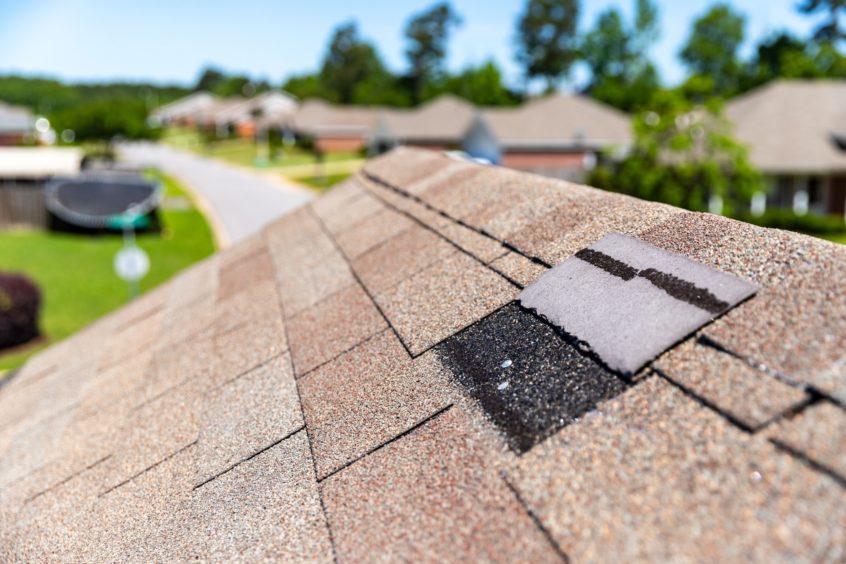Seasonal weather can wreak havoc on a building. Storms that reach wind speeds of 45mph or higher will begin to strip shingles, break tree branches, and uproot debris.
Whether you are looking to protect or replace the roof on your home, place of business, or other building, it’s important to know what to look for and how to identify damage. Knowing the difference between cosmetic defects and potentially disastrous deterioration can save you thousands of dollars.
Identifying Wind Damage on Your Roof
To begin, look for clear signs of damage to a roof. These include broken or loose shingles, curling or peeling shingles, granule loss, water leaks, chimney issues, or damage to your roof’s soffit or fascia. Other tell-tale symptoms of a damaged roof can be soft spots or visible debris. After a severe storm, inspect your roof for damages with the following tips:
Indoor Damage and Leaks
Don’t break out your ladder just yet; some roof issues can be identified inside your home. Discoloration on interior ceilings, wet spots, or peeling paint might all identify damage to your roof that is allowing moisture to penetrate the building.
Granules Missing from Shingles
The sandpaper-like texture of a shingle is made up of tiny granules. During a storm, wind and hail can loosen these granules and weaken the shingles. Look for a buildup of granules along the gutters or at the point in which water leaves the gutter.
Damaged Soffit or Fascia
A building’s soffit or fascia is designed to navigate water off the roof and prevent pooling. Wind and storm damage can loosen or bend these areas. Damage to these areas greatly enhances the chance of getting a leak or opening your home up to pests and unwanted animals.
Peeling shingles and Edge of Roof Curling
Pressure points on your roof such as the edges are most susceptible to damage from high winds. If the wind takes hold of shingles but does not completely remove them, the shingles can loosen and curl. This leaves spaces open to further deterioration and water damage.
Missing Singles
Perhaps the most easily identifiable symptom of roof damage is missing shingles. Finding loose shingles on your yard is a tell-tale sign that roof trouble is brewing. It takes very strong winds or deterioration over time to loosen shingles, so missing just one can be a red flag of a much bigger issue.
Chimneys
If your home has a chimney, take note if it looks a bit lopsided or crooked. Even if a chimney is not greatly damaged, loose seals can let in water, leading to moisture build-up and a weakened roof.
After a big seasonal storm, be sure to inspect your roof by following these tips. If you still are not sure about the extend of the damage and whether or not you will need repairs, contact Royal Renovations. Our experts will help you assess the damage and decide on the next steps.

